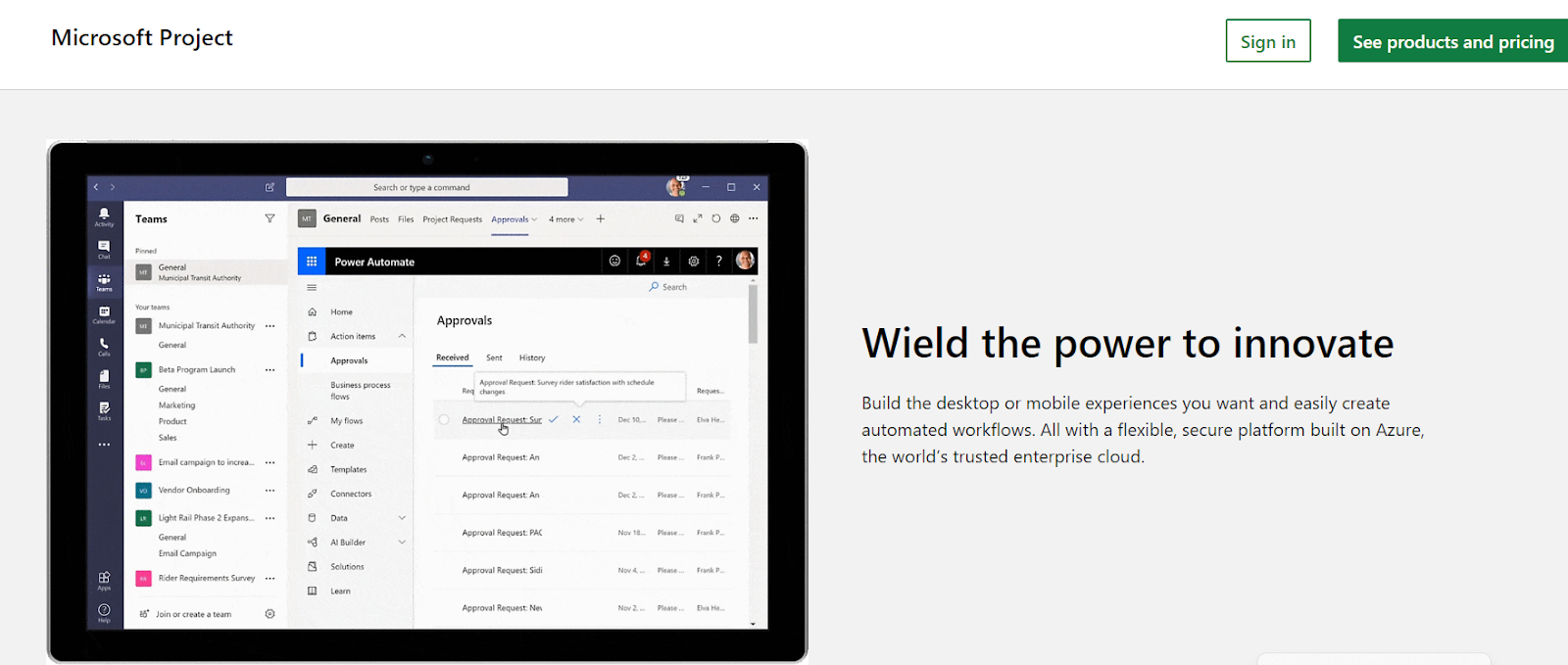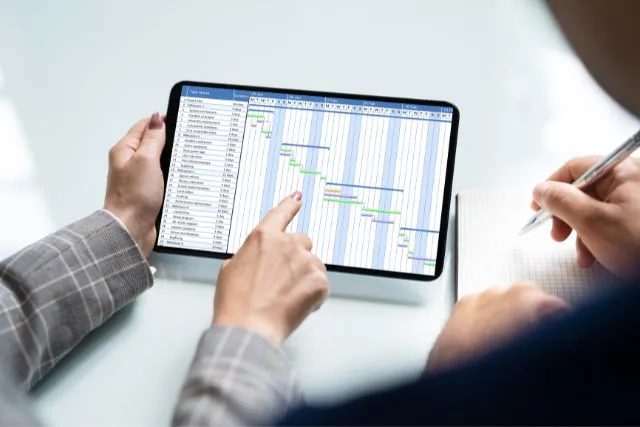It’s vital to estimate time accurately for good project management. To improve time management, people often use project planning tools and software that tracks time.
These tools give information about what tasks need, how long tasks take, etc. This helps keep track of the project’s tasks effectively.
You should know that there are two common techniques in project management:
- Bottom-up
- Top-down estimation
The bottom-up method breaks down the project tasks. Plus, it calculates the time each task takes to give the total project time.
The top-down method gives a timeline for the whole project. Tasks are scheduled within this timeline. People often use a time-tracking app. It is an interesting thing that they think it helps manage deadlines better.
Understanding the importance of time estimation in project management
Estimating time is a key part of project management. If users can estimate how long the project will take accurately, it can speed up task completion. This involves understanding what tasks need and figuring out how long tasks will take. These things help create a smooth project timeline.

Tools for project management, like a time-tracking app or software, make this process easier. It offers features for both top-down and bottom-up estimation. They can efficiently calculate the Estimated Time to Complete (ETC) for project tasks.
The role of time estimation in successful project completion
Estimating time is crucial for successfully completing a project. It involves predicting how long it will take to finish specific tasks. It is a key part of project management. If you can estimate time accurately, it can help manage time effectively. Plus, it can fulfill task requirements.
It is interesting that there are several techniques that can help figure out how long tasks will take.
Impact of accurate time estimation on project budgeting
In project management, it’s critical to estimate time accurately for successful project budgeting. If the Estimated Time to Complete (ETC) for project tasks is predicted accurately, there is a benefit! It can help make sure that the project timeline and the overall project time are realistic. The great news is that it can prevent costs from going over budget and deadlines from being missed.

It can be very helpful to use project planning tools, like software or an app that tracks time.
Common challenges in time estimation
It is a fact that poor project management is a common problem in time estimation. This happens when people don’t understand what tasks need and how long tasks take. That leads to deadlines that aren’t realistic. You may be surprised that time management can be inefficient if people don’t use software that tracks time.
There are other challenges too. Bottom-up estimation is difficult. As it needs detailed information about every part of the project to be accurate.
Top-down estimation can cause big errors. It may happen when the overall view of how long the project will take isn’t accurate. Both methods should be used properly to make sure tasks are completed efficiently.
Unforeseen obstacles and delays
During the time the project was going on, unexpected problems affected our time management. The requirements for tasks changed unexpectedly. That delayed finishing tasks. This made it hard to stick to the project timeline.
Even though we used software to track time and monitor progress. Plus, we used both bottom-up and top-down estimation to estimate the time. But unfortunately, these problems kept happening.
We realized that we needed project planning tools that were more flexible and could adapt. We needed to improve our approach to project management to handle unexpected problems better.
Overestimation and underestimation pitfalls
You may have known that one of the big mistakes in project management is estimating task requirements. This can happen because of mistakes in top-down and bottom-up estimation techniques. That leads to poor time management.
Common mistakes include inaccuracies in the Estimated Time to Complete. It may include not using software that tracks time or project planning tools. This could lead to dates for completing tasks that aren’t realistic and deadlines being missed.
But, there are solutions to these problems! These pitfalls can be minimized or avoided altogether through:
- Using reliable project management tools
- Properly defining project tasks
- Implementing effective project timeline strategies
Key principles of effective time estimation
Estimating time effectively is a vital part of project management. And you will be surprised to know it requires a good understanding of what tasks need!
The main principles involve top-down and bottom-up estimation methods. With top-down, the timeline for the whole project is estimated. Then it broke down into smaller tasks. Histogram estimation involves figuring out the time needed for each task.
Project planning tools give an accurate Estimated Time to Complete (ETC). And the good news is, it helps make sure tasks are finished by the deadlines!
Breaking down tasks for better estimation
To estimate better in project management, it’s important to break down tasks. This technique uses both bottom-up estimation. It looks closely at individual tasks, and top-down estimation. It looks at the project duration as a whole.
Tools for this include project planning tools and software that tracks time. And you must have learnt that both tools are useful for managing time effectively. A time-tracking app can keep track of tasks for individuals and teams. It helps tasks get done faster. The Estimated Time to Complete (ETC) each task helps refine the project timeline.
Considering historical data for time estimation
Historical data is necessary to improve time estimation for project management. This allows for more accurate deadlines and task durations to be set. It applies to both bottom-up estimation and top-down estimation.
Important thing to note: a time-tracking app and software are important to project planning tools. They help track the Estimated Time to Complete (ETC) for project tasks. Plus, these tools improve task completion by providing insights from past projects. That enhances overall time management.
Time estimation techniques for project management
To run a successful project, you need to manage time masterfully. One important method in project management is a top-down estimation. But unlike the top-down approach, bottom-up estimation focuses on detailed estimates of how long tasks will take based on task requirements.
Time-tracking app or software helps monitor task completion and make sure deadlines are met. But wait, there is more to it! It helps establish an accurate project timeline by determining the Estimated Time to Complete (ETC) for project tasks.
Work Breakdown Structure (WBS)
Have you heard the name Work Breakdown Structure or WBS? It is a key part of project management that improves task completion. It involves breaking down larger project tasks into smaller, manageable units. That helps with proper project timeline and time management.
It includes estimating how long tasks will take through bottom-up or top-down estimation and using project planning tools.
WBS often involves using a time-tracking app or software to make sure deadlines are met.
PERT (Program Evaluation and Review Technique)
PERT, or Program Evaluation and Review Technique, is a vital part of project management. It focuses on how long tasks take, what tasks need, and when tasks need to be done. AThis lets managers estimate how long the project will take!
PERT improves project planning tools by reviewing the project tasks thoroughly. It manages time efficiently with a time-tracking app. The technique recalculates the Estimated Time to Complete (ETC) after each task is finished. This makes it a key part of both bottom-up and top-down estimation.
Three-point estimation
The Three-Point Estimation is a fundamental part of project management. Have you heard that It contributes significantly to effective time management during the project timeline? Plus, it helps define what tasks are needed. This estimation principle uses both bottom-up and top-down estimation methods. The good thing is that it gives more accurate results!
Important tools that help with Three-Point Estimation include software that tracks time. And, it includes project planning tools too. These technologies help tasks get finished by the set deadlines.
Function point analysis
Function Point Analysis is a pivotal tool for project management. It is used to estimate project tasks, and the project timeline. It’s an effective method of time management. The reason for this is it focuses on what tasks need and how long tasks take. So it is easier to finish tasks.
Function Point Analysis is used in both top-down and bottom-up estimation methods. It is used for accurate project planning. It can be integrated with a time-tracking app or software.
It streamlines the Estimated Time to Complete (ETC). It improves project efficiency.
Role of project management tools in time estimation
You might have known that tools for project management play a crucial role in estimating time, didn’t you?
These tools help tasks get completed by providing features like top-down estimation, bottom-up estimation.
And the great thing is, it makes sure all project tasks meet their deadlines! This detailed tracking is very valuable in managing how long the project takes effectively.
Using Microsoft project for time estimation
Microsoft Project is a project planning tool that’s used a lot. And guess what? It can be very effective for estimating time in project management. The software gives a detailed view of project tasks. Like what tasks are needed and the estimated time to complete. Plus, it helps with strategic time management too!

This advanced software that tracks time lets teams keep track of task completion in real-time. By using Microsoft Projects, organizations can be more productive. And the best thing is that they can make sure projects are delivered within the set timeframe.
Time estimation with Asana
Asana is a strong project management tool. It is used for better time management, finishing tasks, etc. It includes an app that tracks time and lets users figure out how long tasks take. That gives a detailed bottom-up estimation for project timelines.

Asana enables top-down estimation. This helps to predict the overall time the project will take. It brings together what tasks are needed, helping to calculate the Estimated Time to Complete (ETC) for each project task.
Asana is an effective project-planning tool.
How Trello can aid in time estimation
Trello can be an effective app that tracks time to help with estimating time. This tool lets you set and keep track of project timelines, what tasks need, and deadlines, etc. Features like inputting how long tasks take and viewing the estimated time to complete (ETC) provide both top-down and bottom-up estimation. What a great thing it is! It makes sure tasks are completed on time in the end.

Trello works as a complete project planning tool through its features for visibility and organizing. And there is more to it… This tool gives a clear picture of how long the project will take and provides an organized way to meet deadlines.
Training your team for better time estimation
In order to provide precise project timing, it's crucial that we consider different methods of task estimation. An efficient solution may lay in the utilization of time tracking for employees, allowing a more transparent approach to work estimation. This can lead not only to improved accuracy in task timing but also greater overall project management success.
It’s important to improve your team’s skill in estimating how long tasks take for effective project management. This can be done by providing training on the best project planning tools, like software that tracks time. This software lets your team members keep track of their work, making time management better and making sure tasks are completed within the set deadlines.
The team should learn about bottom-up and top-down estimation. These methods help estimate how long the project will take based on what tasks are needed. It can greatly improve the project timeline too.
Importance of communication in time estimation
Good communication is necessary in estimating time. And it plays a key role in project management and finishing tasks. Clearly explaining what tasks need and when tasks need to be done makes sure everyone understands. And it reduces misunderstandings and makes things more efficient.
Using an app or software that tracks time can help give a more accurate project duration and timeline.
Continuous learning and improvement in time estimation
Continually learning and improving in estimating time improves finishing tasks, and meeting deadlines. It’s important to understand what tasks need to generate an accurate bottom-up or top-down estimation of project tasks. In this digital age, using an app or software that tracks time helps manage time efficiently.
Using advanced project planning tools can make the process smoother. It gives a reliable Estimated Time to Complete (ETC). The key to improving time estimation is continually learning from past experiences. And this will help improve the accuracy of predictions over time.
Conclusion: The impact of accurate time estimation on agency success
Estimating time accurately has a big impact on the success of an agency. An effective strategy for project management involves using the top-down estimation technique to figure out the overall project duration, relating to project tasks and deadlines.
Time management is mainly achieved through the use of software that tracks time and project planning tools. Using an app that tracks time helps understand what tasks need properly. This influences bottom-up estimation which ultimately ensures projects are delivered within the set project timeline.






